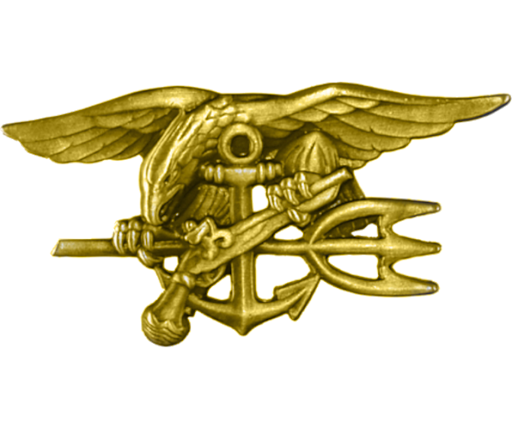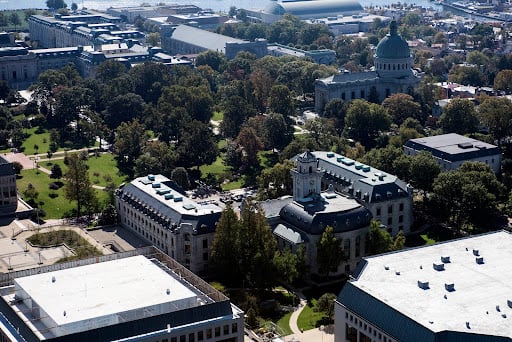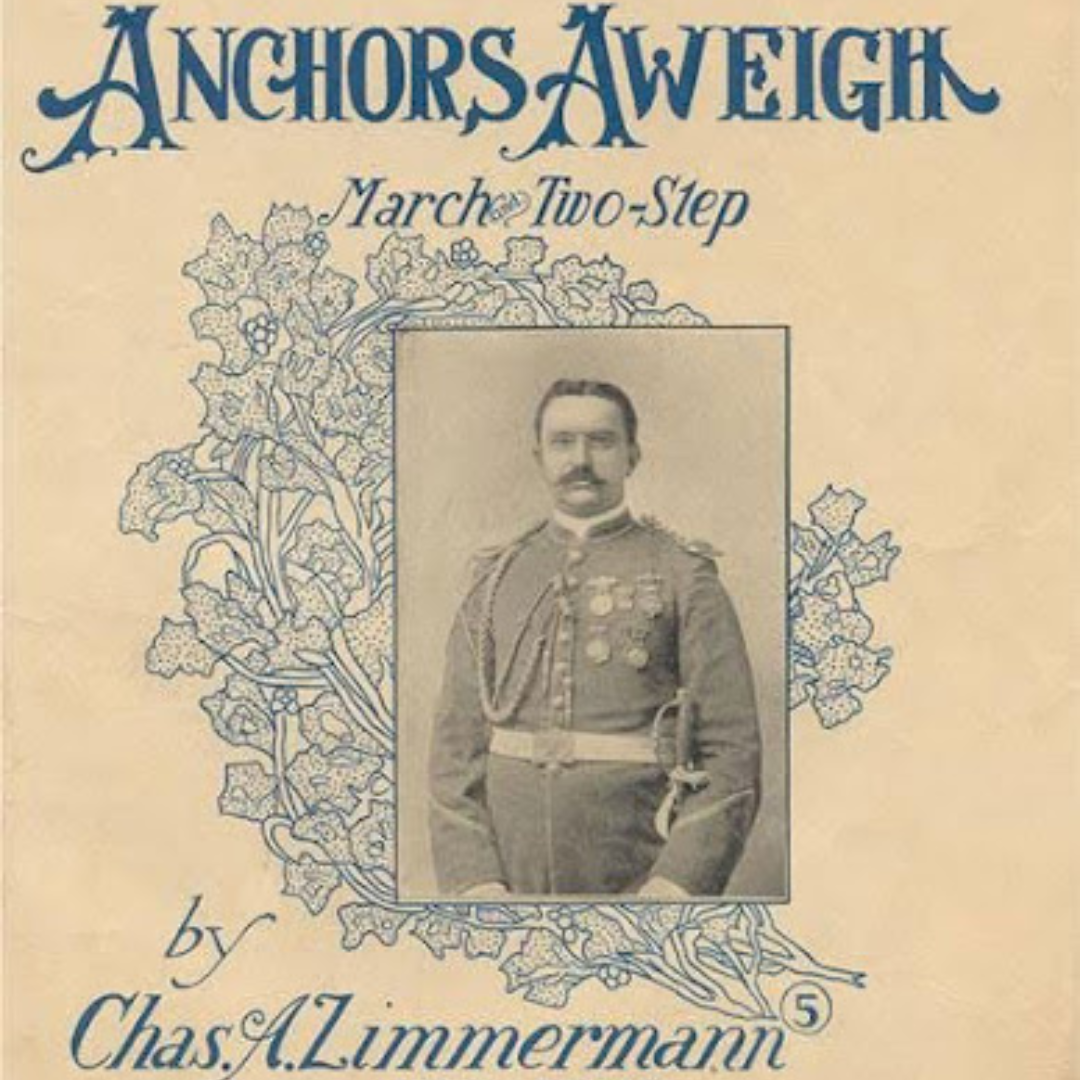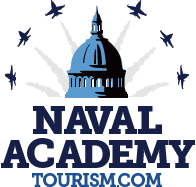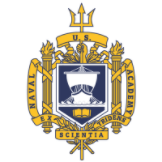Just the words “Navy SEAL” conjure images of extremely strenuous training exercises, clandestine missions accomplished in impossible situations, and the remarkable work of the Navy’s most elite fighting forces. Navy SEALs are known around the world as formidable warfighters who can do the unimaginable. The path to that profession often starts right here at the U.S. Naval Academy. When midshipmen receive their USNA service assignments to commit to Navy SEAL training, they become a part of the Naval Special Warfare (NSW) Command, a branch of the U.S. Special Operations Forces.
What Is a Navy SEAL?
Established in January 1962 by President John F. Kennedy, the Navy SEALs are a “nimble, elite maritime military force suited for all aspects of unconventional warfare.” They include eight Sea-Air-Land (SEAL) teams, one SEAL Delivery Vehicle (SDV) team and three special boat teams, as well as supporting commands which deploy forces worldwide. The Navy SEAL community consists of approximately 9,200 total personnel including more than 2,700 active-duty Special Warfare Operators, 700 Special Warfare Boat Operators (SWCC), 700 reserve personnel, 4,000 support personnel, and more than 1,100 civilians.
NSW is designed to fight a globally-dispersed enemy, whether ashore or afloat, before they can act. Therefore, they work in small groups, maintaining a constant overseas presence where they can quickly deploy from Navy ships, submarines, and aircraft, as well as overseas bases and forward-based units. SEALs are critical to the success of the Fleet. Since they can perform across a wide range of conflicts and in operations other than war by extracting real-time, first-hand intelligence, they can empower military decision-makers with immediate, multiple options as rapidly changing crises unfold around the world. They are essential sources of information and support.
How Do You Become a Navy SEAL?
According to their site, “Special Warfare requires those willing to take on the most extreme challenges. We require highly specialized talent, training, and nerve to accomplish the most dangerous tasks.” USNA graduates who follow this career path take on the vision, leadership, doctrinal guidance, resources, and oversight for all Navy SEALs. Navy SEALs pursue constant learning, improvement, and refinement of skills by banding together. They work as one unit to reach the peak fitness level and train to be the best.
Related: Service Assignment Spotlight: Navy Pilot and NFO
Navy SEAL Training
Their training is famous for being almost impossible, yet SEALs persevere. The process is extremely long and arduous, and each SEAL candidate must complete it. Not all will make it through. After graduation from the Academy, candidates attend the Naval Special Warfare Preparatory course (NSWPREP) at the Naval Special Warfare Center in Coronado, California.
STAGE 1: Naval Special Warfare Preparatory Course (NSWPREP)
A five-week course, the NSWPREP homes in on fitness and special warfare. At its conclusion, candidates must pass a Physical Screening Test (PST) to advance to the next level.
STAGE 2: Naval Special Warfare Orientation
In the two-week Naval Special Warfare Orientation (NSWO), instructors cover all aspects of the special operations training lifestyle, as well as the values of teamwork and perseverance. Candidates will learn how to run in the sand with full gear and swim in the ocean. They’ll undergo underwater training in the pool and train for the obstacle course. They’ll also dive into NSW culture and heritage. At this point, instructors will select candidates who are mentally strong, physically fit, and ready for the challenge of becoming a NSW operator. Those who succeed attend the First Phase of BUD/S training.
STAGE 3: SEAL - First Phase
This seven-week First Phase is the basic conditioning phase that develops the class in physical training, water competency, and mental tenacity while continuing to forge teamwork. Each week is harder than the previous, as the expectations for running, swimming, and calisthenics increase. Candidates are assessed on a four-mile timed run, a timed obstacle course, and a two-mile timed swim. They’ll also learn how to conduct hydrographic survey operations.
Then comes the famous Hell Week, executed during the fourth week. It’s called “the ultimate test of your will.” Those who succeed move on to Second Phase. Over a five-and-a-half day stretch, candidates only sleep about four hours in total while training more than 20 hours per day. By week’s end, they’ll have run more than 200 miles.
STAGE 4: SEAL - Second Phase, Combat Diving
After this point, many of the candidates are on their way to becoming SEALs. The Second Phase is seven weeks and teaches underwater skills unique to Navy SEALs. During this phase, they’ll learn how to conduct basic combat swimming and open and closed-circuit diving, all in uncomfortable environments. Those who make it move on to Third Phase.
STAGE 5: SEAL - Third Phase
This is the land warfare phase. Over seven weeks, candidates learn about basic weapons, demolitions, land navigation, patrolling, rappelling, marksmanship, and small-unit tactics. The last three and a half weeks of training usher in longer, more intense days that mimic the work hours spent in the field. These basic move-shoot-communicate skills serve candidates well in SEAL Qualification Training (SQT) and on the SEAL Teams. Candidates that reach this level have demonstrated extraordinary commitment to becoming SEALs.
STAGE 6: SEAL - SEAL Qualification Training
The final phase is SEAL Qualification Training (SQT), a 26-week course that transitions candidates from Naval Special Warfare to a more advanced degree of tactical training. SQT disseminates the core tactical knowledge they will need to join a SEAL platoon, including
1. Weapons training
2. Small unit tactics
3. Land navigation
4. Demolitions
5. Cold weather training
6. Medical skills
7. Maritime operations
They’ll participate in Survival, Evasion, Resistance and Escape (SERE) training and parachuting, including static-line and freefall operations at high and low altitudes. Then, they finally become Navy SEALS. They’ll graduate and receive SEAL Trident warfare designators before being assigned to a SEAL team. The next stop is their first deployment.
Related: Service Assignment Spotlight: Navy Surface Warfare Officer
What Does a Navy SEAL Do?
Once deployed, there are many paths for a Navy SEAL. The Fleet relies on Navy SEALs to provide immediate military options and aid for crises happening all over the world. As such, SEAL duties include, but are not limited to, the following:
- Conducting insertions and extractions by sea, air, or land to accomplish covert, Special Warfare/Special Operations missions
- Capturing high-value enemy personnel around the world
- Gathering information and intelligence through special reconnaissance missions
- Implementing small-unit, direct-action missions against military targets
- Performing underwater reconnaissance and the demolition of natural or man-made obstacles prior to amphibious landings
These high-stakes missions can be extremely dangerous, so the intense training they’ve endured ensures all SEALs are up to the task. Most deployments last between six to eight months.
Both training and working occur in a variety of environments, including deserts, urban areas, mountains, woodlands, jungle conditions, and arctic conditions. They may be introduced to a situation by parachute, submarine, helicopter, high-speed boat, foot patrol, or combat swimmer insertion. Units include task units (32-person), platoons (16-person), squads (8-person), teams (4-person) and swim buddy (2-person).
Where Navy SEALS Are Made
In addition to the formal Navy SEALs training, much of the officer candidates’ training starts right here at the U.S. Naval Academy, before their USNA service assignment. Through four years of rigorous academic, military, and athletic training, midshipmen are prepared for the first phases of SEAL training. Their tremendous mental fortitude in the face of extreme challenges is fostered here; the next steps are incredibly grueling and require candidates to push past their perceived mental and physical limits, coming together as a team to rely on each other in the harshest of conditions. Only then can they receive the honor of being named a Navy SEAL.
In fact, our newest USNA Commandant, Captain Walter H. Allman III, is a career NSW officer. A USNA Class of 1997 graduate, he served on SEAL Teams 1 and 3, SEAL Delivery Vehicle Team 1, and the NSW Development Group. His command tours include Tactical Development and Evaluation Squadron 4 and Naval Special Warfare Groups 3 and 8. We are extremely proud to have him join our team here.
Related: Career Opportunities for USNA Graduates
Support the Navy SEALs
At USNA, we are honored to support our midshipmen in preparing for their USNA service assignment as Navy SEALs. You can make a difference for them too. The Naval Academy Business Services Division (NABSD) helps the Brigade of Midshipmen become successful, well-rounded future leaders. We fund a variety of extracurricular activities such as cultural arts, theater, music, club sports, and other activities to build teamwork and foster camaraderie among the Brigade. When you visit and explore the USNA through your USNA tours, dining, and shopping, you’re directly supporting the Brigade. The NABSD and the future Navy SEALs thank you for your support.
-1.png)

